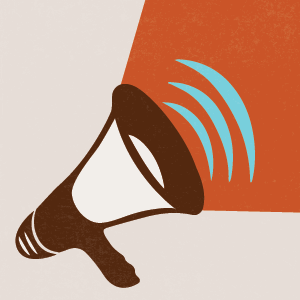
When it comes to promotion, there are a lot of options, and it can be difficult to know where to start. The key to effectively marketing your event is establishing a relationship with your potential ticket buyers. Before you take a look at how you want to promote your event, you will need to understand who you are promoting to – this is called your target audience.
Your target audience is the demographic group of people most likely to be interested in your event. If you have a sense of the type of people most likely to attend your event, you can market your event far more effectively.
Let’s start with an example:
Let’s say you have a stack of 100 flyers advertising the jazz show you’re putting on this Friday, and you’re trying to figure out the best way to pass them out. Sure, you could just walk down the street and hand the flyers to the first 100 people you see, but there’s no reason to assume that these folks have any interest in jazz, and many of your flyers would probably end up in the trash.
Now let’s say instead of choosing people at random, you hand out your flyers outside a popular instrument repair shop, or leave a stack in the local record store. You’ll find that far more of your flyers find their way into the hands of music lovers.
By targeting a specific demographic, (music fans in this example) where they’re likely to spend time (music stores) you’re wasting less flyers, getting more positive response, and interacting with people who are more likely to buy tickets to your event–or even become long-term fans.
This same concept applies to every type of promotion–social media, traditional media, posters– whatever methods you use to market your event. The effectiveness of your promotion is determined by knowing who your target audience is, and how to reach them.
What is a customer profile?
The idea of a “target audience” may seem like an abstract concept, but it’s not– your potential ticket buyers are real people with interests, habits, likes, dislikes, and–most importantly– shared traits that can help you effectively reach them with your promotion. To understand who these people are, start by create a customer profile- a “portrait” of your ideal ticket buyer. A common starting point for creating this profile is by looking at your audience demographics, including:
- Age
- Location
- Gender
- Occupation
- Family status
- Income level
- Education level
- Hobbies
- Interests
- Shopping habits
- Values
- Behaviors
From this demographic information, you can then ask yourself more specific questions:
- How can I adjust my message to appeal to this demographic?
- What type of social media promotion is most likely to draw the attention of my target audience?
- How might my target audience respond to advertising in traditional media sources, such as newspapers, event calendars or radio stations?
- Where does my target audience spend time, and can I use this information to better reach them with my advertising?
For example: If you’re putting on an opera, you want to reach opera fans. What age range do you tend to see at the opera in your area? Are there a lot of people from the age of 18-24, or more 35-55 ? (Hint: you can sometimes find event demographic data online depending on what type of event you’re putting on, to test this out, try Googling “Opera Attendee Demographics”)
Let’s say you find that the average age of your attendee is 48 years old, that’s already useful information. Many studies break down trends in social media usage among different age groups, and you can use the data from these studies to assess what social media platform will best reach a potential customer based on criteria such as their age. The Pew Research Center offers a good starting point for social media usage data.
Studies have shown that a 48 year old is statistically far more likely to be on Facebook than Twitter, Instagram, Pinterest or Snapchat. So instead of spreading your promotion efforts across every social media platform, focus on the one that’s most likely to work.
Customer profiles will vary depending on the specifics of your event. A punk show will draw a different crowd than an opera, and the way you promote these events will be different, but understanding the concept behind targeted advertising will help you adapt your marketing to best reach your potential attendees, and will ensure that you aren’t wasting your money promoting in ways that don’t reach the right people. While data and research can help you more effectively promote, you can also identify your target audience through observation:
- Think about your past attendees. If you have done events in the past that are similar to your current event, this puts you at an advantage. If you are able to, keep your past attendees up to date on your upcoming events, and consider how they heard about your events in the first place.
- Ask yourself: am I part of my own target audience? If you fit the profile of the type of person you’re trying to reach, think carefully about where you would best be reached by marketing, and plan your promotional strategies accordingly.
- Take a look at similar events in your area. Do some research into the methods other event producers in your area use to promote their events. Social media makes it much easier to see how events are marketed. Do you see a lot of paid Facebook ads for events in your area? Do you see event organizers asking people to join their email list? Have you noticed print advertising or calendar listings for events similar to yours?
- Compile a list of relevant places to advertise your event. Think about this broadly: if you get a lot of college students at your events, think about how your average college student gets their information (social media, college bulletin boards, flyers in on-campus laundromats, libraries etc.) How about an older demographic? Might they rely more on traditional media? Calendar listings? Posters?)
- Lastly, an excellent way to make contact with your target audience is to think about any contacts you might have within the community you are trying to reach. If you have even just one friend, colleague or employee who is willing to help you with your event and has a solid network within your target audience, they can be a great asset in promoting your event. They could send out invitations to all their friends on Facebook, post your event on social media and have it seen (and ideally shared!) by their friends who share similar interests.
The last step in effectively marketing to your target audience is remembering to think ahead about future events. At your next event, pay careful attention to who attends. Consider putting a questionnaire on your ticketing page that asks attendees how they heard about your event, and using this information to refine your advertising in the future.
If you have more questions about defining your target audience, contact our promotions team.
Event Tips >



 Arts
Arts Comedy
Comedy Event Tips
Event Tips Film
Film Food & Drink
Food & Drink Good Causes
Good Causes Music
Music News
News Radio
Radio Roller Derby
Roller Derby